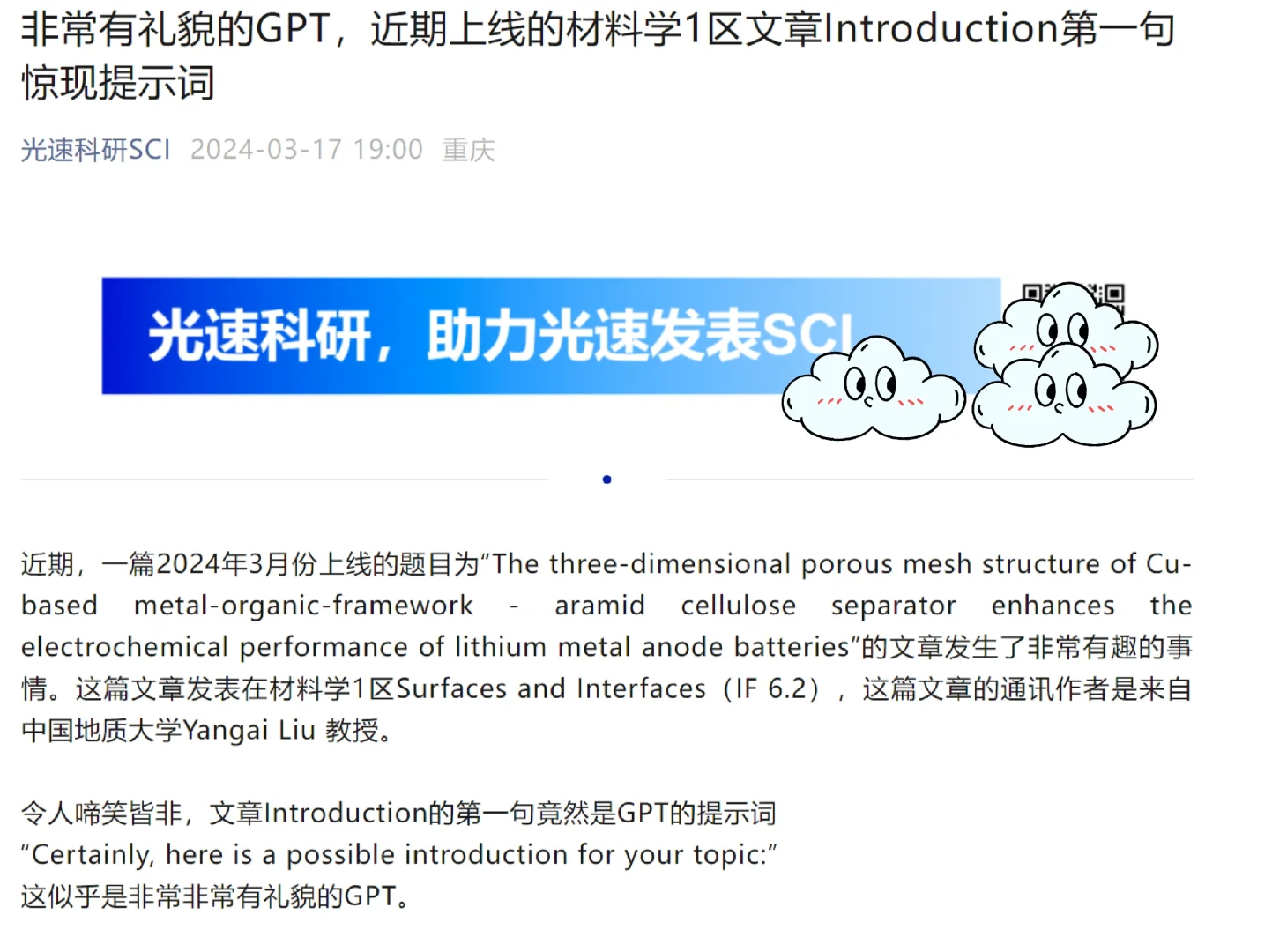
非常有礼貌的GPT,论文第一句惊现提示词













近期,一篇2024年3月份上线的题目为“The three-dimensional porous mesh structure of Cu-based metal-organic-framework – aramid cellulose separator enhances the electrochemical performance of lithium metal anode batteries”的文章发生了非常有趣的事情。这篇文章发表在材料学1区Surfaces and Interfaces(IF 6.2),这篇文章的通讯作者是来自中国地质大学Yangai Liu 教授。
令人啼笑皆非,文章Introduction的第一句竟然是GPT的提示词
“Certainly, here is a possible introduction for your topic:”
这似乎是非常非常有礼貌的GPT。
这提醒我们Proofreading 的重要性。
同时也要提醒大家在使用相关AI工具可能会被滥用或者成为“学术造假”的工具,产生一系列诸如著作权归属、学术不端、数据和隐私保护、内容虚假等问题。
我们也在思考:
利用AIGC工具帮助写论文,到底属不属于学术不端呢?我们可以用来帮助我们做什么呢?
一本AIGC使用指南给了我们指导:
2023年9月20日,中国科学技术信息研究所(简称“中信所”)与爱思唯尔(Elsevier)、施普林格·自然(Springer Nature)、约翰威立国际出版集团(Wiley)三家国际出版集团共同完成的《学术出版中AIGC使用边界指南》 (中英文版) 正式对外发布。
科研不易,学术无捷径,希望所有科研工作者能正确看待AIGC工具!